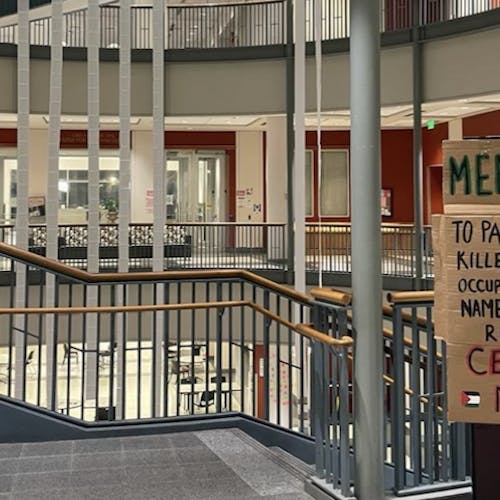Intimate partner violence in LGBTQ+ relationships increased during pandemic, recent study says

A recent study found that 18 percent of previously abused people who identify as LGBTQ+ reported increases in intimate partner violence (IPV) at the start of the pandemic, according to a press release.
IPV includes physical, sexual and/or emotional abuse between romantic or sexual partners, and other recent studies have found a high prevalence of IPV in relationships by individuals who identify as bisexual, lesbian and gay, as well as those who identify as transgender or gender non-conforming, according to the study.
The study was conducted from May to July of 2020 using an anonymous survey administered to approximately 1,000 individuals who identified themselves as members of the LGBTQ+ community. Ninety-eight of the survey participants reported instances of IPV from their partner at the time.
Kristen Krause, deputy director of the Center for Health, Identity, Behavior and Prevention Studies and co-author of the study, said that these rates were higher among individuals living in southern regions of the U.S. and those with depressive symptoms.
She said that the increase in IPV during the pandemic and the difference in the frequency of reports from the South compared to other regions surprised her most.
Previous research has found differences in reported instances of IPV depending on the state, education level and whether an individual lives in a rural or urban area, according to the study.
Lower education levels, for example, were associated with higher levels of IPV in gay relationships. Living in rural areas is also associated with a higher prevalence of IPV.
Being younger and identifying as a person of color were also found to be associated with increased rates of IPV, according to the study.
The study said that the difference in reports of IPV from southern regions of the country corroborates previous studies indicating differences in reports from different states and that this may be because those regions comprise of more rural areas.
The study also noted that while the data did not conclusively show that depressive symptoms preceded instances of IPV, factors that stem from both, such as increased social isolation, diminished social support or intervention from others and reduced sense of power could have affected the way individuals resolved their situation.
Krause said that the existing association between the two can inform future research on the matter and guide the development of socio-emotional tools that help individuals affected by IPV.
The study said that the data and results collected should prompt future research regarding the pandemic’s impact on the mental and physical welfare of the queer community and initiative from healthcare professionals to address the potential of IPV in the LGBTQ+ community during public health crises.
“These findings also support calls for increased IPV-related resources available for and tailored to the needs of LGBTQ people at all times — and particularly during times of national crisis.,” the study said.
The study concluded that practitioners should also be more aware of IPV-related services available in their communities and online, and policymakers at all levels of government should be working to expand the availability of such services.
Krause also said that this was one of the first studies on how the COVID-19 pandemic impacted LGBTQ+ communities and that its results are important because current support, material and programming related to IPV are very hetero- and cis-normative.
“It's imperative that practitioners, providers and counselors understand the impact on other communities so that changes can be made and tailored appropriately in the future,” she said.



